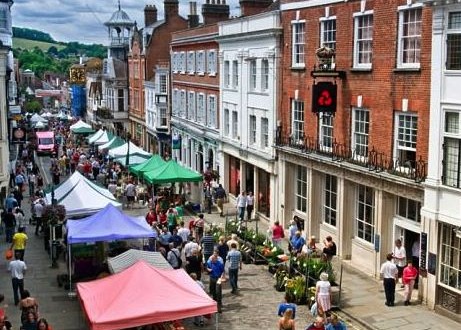House sales growth at 10-year full of England


Property sales within the six months to September 2019 rose to their highest level because the start of the housing downturn in 2007, according to new research.
At 396,756, sales of properties in Britain were 21% higher than within the same 6 months this year. It’s even the highest year-on-year rise in a decade for the 6 months to September timeframe, a Lloyds Bank survey has revealed.
Property sales, however, have not recovered to 2006 levels – they were still 41% below the market peak of 673,699 recorded within the six months to September in 2006.
In further evidence the market pick-up has become increasingly widespread beyond London, Lloyds said that regionally there’s been a “remarkable consistency” in the development in property sales.
Both its northern border West and also the East Midlands saw a 23% increase in activity between March and September 2012 and the same period annually later. The North East saw the lowest rise over this era, at 19%.
On a far more local level, the East London borough of Newham saw the biggest year-on-year increase in home sales, with a 62% rise in the six months to September in contrast to the same period last year.
Crowborough in East Sussex saw the largest stop by home sales over the same period, having a 10% fall in transactions.
Marc Page, mortgages director at Lloyds Bank, said: “Low interest rates, improvements in consumer confidence and Government schemes, for example Assistance to Buy, all appear to have led to the rise in home sales.”
Here may be the percentage of “hot spots” accompanied by the “cold spots” recorded in every region. Hot spots cover the proportion of towns that recorded an annual increase in sales within the 6 months to September and cold spots recorded an annual fall:
:: North, 100%, 0%
:: Yorkshire and the Humber, 93% 7%
:: North West, 98% 2%
:: East Midlands, 97% 3%
:: West Midlands, 100%, 0%
:: East Anglia, 95%, 5%
:: Wales, 100%, 0%
:: South West, 98%, 2%
:: South East, 97%, 3%
:: London, 100%, 0%
:: Britain, 98%, 2%
Here would be the towns which saw the largest annual percentage increase in property sales in the six months to September, accompanied by the percentage increase:
1. Newham, London, 62%
2. Redhill, South East, 56%
3. Farnborough, East, 52%
4. Salford, North West, 51%
5. Walton On Thames, South East, 50%
6. Ware, South East, 49%
7. Hinckley, East Midlands, 48%
8. Chester, North West, 47%
=9. Spalding, East Midlands, 46%
=9. Dorchester, South West, 46%
Here would be the towns which saw the largest annual percentage reduction in property sales within the 6 months to September, accompanied by the proportion decrease (only nine towns are included as these would be the only ones found to have recorded a yearly decline):
1. Crowborough, South East, 10%
=2. Caterham, East, 9%
=2. Hyde, North West, 9%
4. Dewsbury, Yorkshire and also the Humber, 7%
5. Corby, East Midlands, 5%
6. Haywards Heath, East, 3%
7. Falmouth, The west, 2%
=8. Uckfield, South East, 1%
=8. Selby, Yorkshire and also the Humber, 1%
Housing Minister Kris Hopkins said: “With house sales at a 10-year high, it’s clear the housing industry has turned a large part. Our efforts to cut the record deficit have kept interest rates low, meaning home ownership has become at its most affordable since 2007.
“But we’re determined to help any hard-working aspiring homeowner jump on the property ladder, which is why our Help to Buy schemes are already helping 28,000 people buy their very own home with a fraction of the deposit they’d normally require.
“Leading developers have said they’ll build more as a direct response to this increased demand, with housebuilding now growing at its fastest rate for a decade.”
